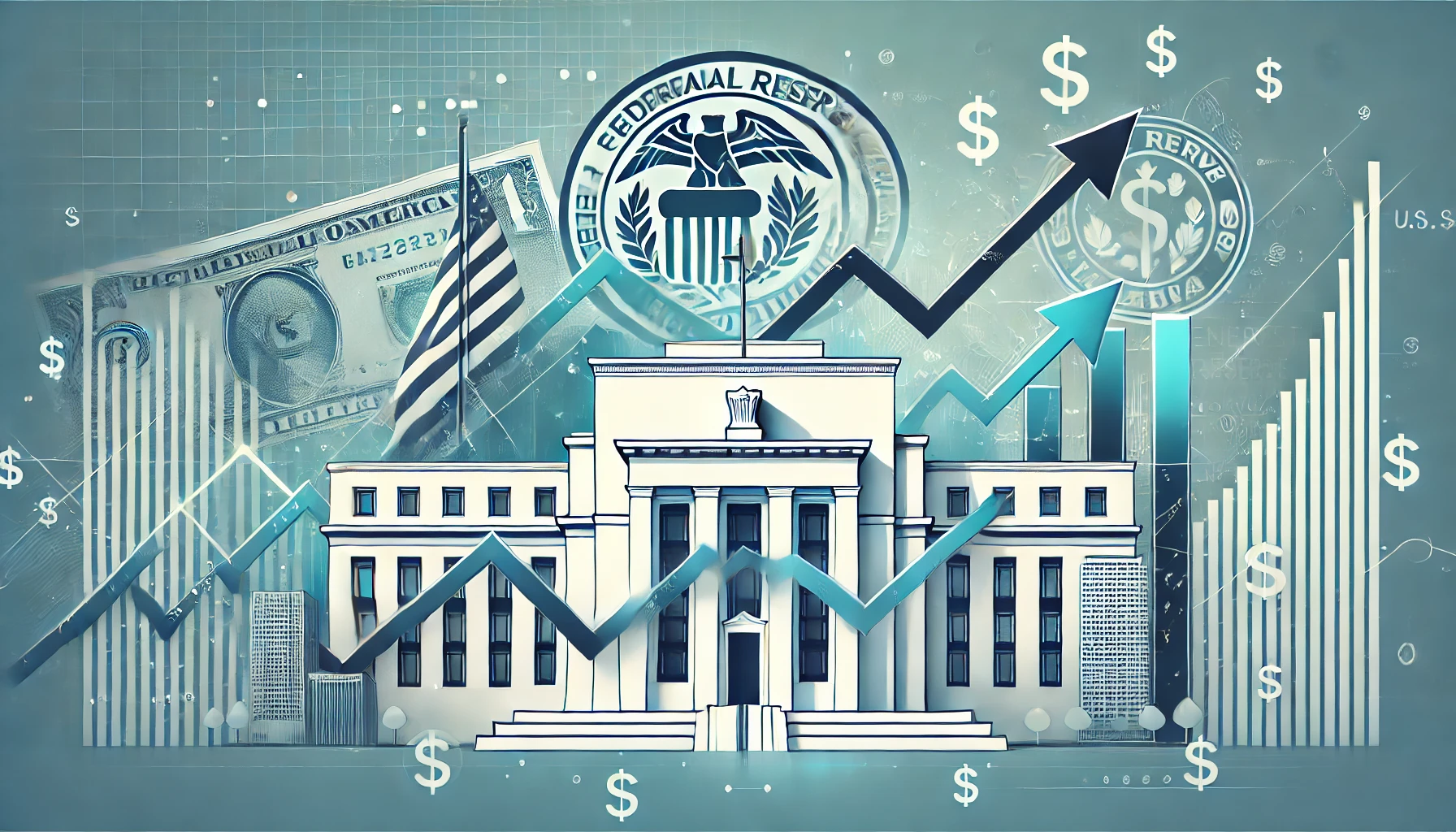Fed Official’s Latest Words Reignite Interest-Rate Cut Debate: What’s Next for the US Economy?
In recent weeks, a Federal Reserve official’s comments have reignited the debate surrounding a potential interest rate cut. This discussion comes at a critical juncture for the US economy, as policymakers and investors weigh the implications of future decisions on Federal Reserve interest rates. The possibility of a Fed rate cut debate has sparked widespread speculation, with many wondering whether the Federal Reserve will choose to lower interest rates or continue holding firm to its current policies.
In this blog, we’ll break down the key factors driving the interest rate debate, explore the broader implications for US interest rate policy, and analyze how these decisions may shape the economic landscape in 2024.
Understanding the Interest Rate Cut Debate
The Federal Reserve, or Fed, is responsible for managing US monetary policy, which includes setting the target for interest rates. These rates play a critical role in influencing borrowing costs, consumer spending, and overall economic growth. When the Fed lowers interest rates, it typically stimulates economic activity by making it cheaper to borrow money. Conversely, raising rates can help cool inflation by increasing the cost of borrowing.
Why Interest Rate Cuts Matter
A potential interest rate cut is significant because it signals a shift in the Fed’s approach to managing the economy. Following the economic challenges caused by the COVID-19 pandemic, the Fed implemented a series of aggressive rate cuts to support recovery. However, as inflationary pressures grew in 2022 and 2023, the Fed adopted a more cautious stance, focusing on preventing runaway inflation by raising rates.
Now, as inflation begins to moderate and concerns about a potential economic slowdown rise, some experts believe that a Fed rate cut debate is timely. Lowering rates could provide relief to businesses and consumers by reducing borrowing costs and encouraging spending, but it also raises concerns about overheating the economy or fueling another inflationary surge.
The Fed’s Interest Rate Decision: A Balancing Act
The Fed interest rate decision is influenced by several factors, and the decision to cut or maintain rates involves a delicate balancing act. On one hand, policymakers must consider the risk of economic stagnation or recession if interest rates remain too high. On the other hand, cutting rates prematurely could undermine the progress made in combating inflation.
Factors Driving the Fed Rate Cut Debate
Several factors are contributing to the renewed debate about whether the Federal Reserve will cut interest rates:
- Economic Growth: The US economy has shown signs of slowing down in recent months, particularly in sectors like housing and manufacturing. A rate cut could help stimulate these industries by lowering borrowing costs for businesses and consumers.
- Inflation: Although inflation has cooled since its peak in 2022, it remains a key concern. The Fed must balance the risk of reigniting inflation with the need to avoid an economic downturn. If inflationary pressures remain subdued, a rate cut may be seen as a viable option.
- Global Economic Conditions: The US is not immune to the challenges faced by global markets. Slower growth in major economies like China and Europe could have ripple effects on US economic performance. In this context, lowering interest rates could help the US maintain stability in the face of global uncertainty.
- Labor Market Strength: Despite economic headwinds, the US labor market has remained resilient, with low unemployment rates and strong job growth. A key question is whether this strength can be sustained if interest rates remain high, or whether a rate cut would be needed to support job creation and wage growth.
Interest Rate Hike vs Cut: What’s the Better Move?
The debate over whether to implement an interest rate hike vs cut is central to the Federal Reserve’s decision-making process. Both options come with their own sets of pros and cons, and the right move will depend on the broader economic environment.
The Case for an Interest Rate Cut
Proponents of an interest rate cut argue that lowering rates will stimulate economic growth by making it cheaper to borrow money. This can be particularly beneficial in sectors like housing and manufacturing, where higher borrowing costs have slowed investment. Additionally, lower interest rates can encourage consumer spending, which is a key driver of economic growth in the US.
By cutting rates, the Fed could also provide relief to businesses that are struggling with rising input costs, helping them maintain profitability and avoid layoffs. In this sense, a rate cut could act as a preventive measure against a potential economic downturn.
The Case for Maintaining or Raising Interest Rates
On the other side of the debate, those advocating for maintaining or raising rates argue that inflation remains a concern, and cutting rates too soon could undermine efforts to keep prices stable. While inflation has moderated, it has not yet returned to pre-pandemic levels, and lowering rates could lead to an increase in consumer demand that fuels another wave of price hikes.
Raising rates, or even keeping them steady, could help ensure that inflationary pressures do not re-emerge. Additionally, some economists believe that the current economic slowdown is temporary and that the economy will regain momentum without the need for further stimulus.
Impact of Interest Rate Cuts on the US Economy
Whether the Fed decides to cut rates or not, the impact of interest rate cuts on the broader economy will be significant. Lower interest rates can help boost economic activity, but they also come with risks. Here are some of the key areas that would be affected by a rate cut:
Consumer Spending and Borrowing
One of the most immediate effects of an interest rate cut is its impact on consumer spending and borrowing. Lower rates make it cheaper for individuals to finance large purchases, such as homes or cars, by reducing the cost of loans. This can boost demand in key sectors of the economy and support economic growth.
Additionally, lower rates can help consumers reduce the burden of existing debt by lowering interest payments on credit cards, mortgages, and other loans. This extra disposable income can lead to increased consumer spending, which is a major driver of economic growth.
Business Investment and Job Creation
A Fed rate cut can also have a positive impact on business investment. When borrowing costs are lower, businesses are more likely to take out loans to finance expansion projects, hire new employees, and invest in new technologies. This can lead to job creation and wage growth, further supporting economic recovery.
However, the Fed must balance this with the risk of inflation. If businesses overextend themselves by taking on too much debt, it could lead to financial instability down the road.
Financial Markets and Investor Sentiment
The Fed interest rate decision also has a major impact on financial markets. A rate cut typically leads to higher stock prices, as investors expect that lower borrowing costs will boost corporate profits. This can create a positive feedback loop, as rising stock prices increase investor confidence and encourage further investment.
At the same time, lower interest rates can reduce returns on savings and fixed-income investments, such as bonds. This may lead some investors to seek higher-risk investments in search of better returns, which can increase market volatility.
US Interest Rate Policy: What’s Next for 2024?
As we look ahead to 2024, the outlook for US interest rate policy remains uncertain. The Federal Reserve’s monetary policy will likely be shaped by a range of economic factors, including inflation, employment levels, and global economic trends. However, the possibility of an interest rate cut will continue to dominate the conversation as policymakers weigh the risks and benefits of such a move.
Predictions for the US Economic Outlook in 2024
Many economists are predicting a mixed US economic outlook for 2024. While inflation is expected to continue moderating, concerns about economic growth and global market volatility persist. The Fed’s actions in response to these challenges will be crucial in determining the direction of the economy.
If the Fed opts to lower rates, we could see a resurgence in consumer spending and business investment. However, if inflationary pressures remain high, the Fed may be forced to maintain or even raise rates to ensure price stability.
The Fed’s Next Move in the Rate Cut Debate
As the Fed rate cut debate heats up, all eyes are on the Federal Reserve and its upcoming decisions. The central bank must navigate a complex economic environment, balancing the need for economic growth with concerns about inflation. Whether the Fed opts for an interest rate cut or chooses to maintain its current course, the impact of these decisions will reverberate across the US economy.
For investors, businesses, and consumers alike, staying informed about the Federal Reserve’s interest rate decisions is critical to understanding the broader economic landscape. To stay updated on the latest economic trends and Federal Reserve policies, explore more insights at Regent Studies.



